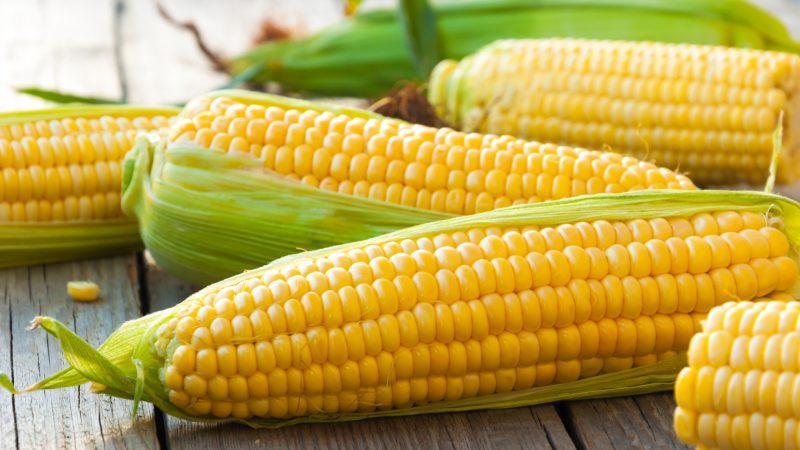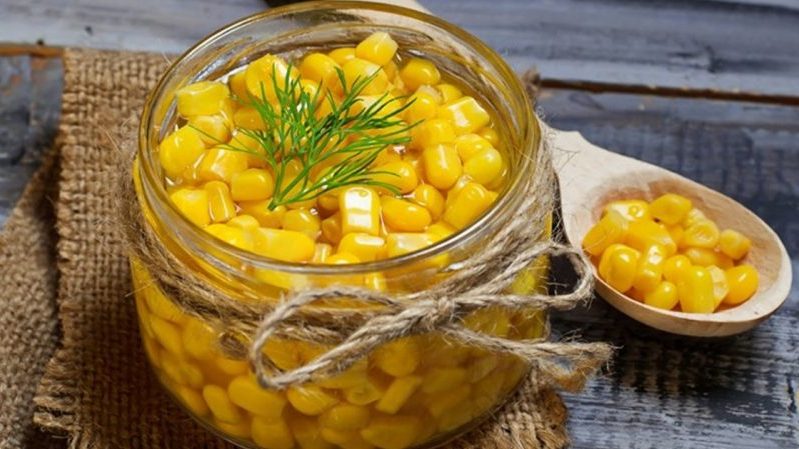Where and how to store boiled corn correctly: different ways and terms of freshness
There is no need to talk about the benefits of fresh vegetables. However, there are many ways to preserve the valuable properties of freshly prepared dishes. So, during the corn ripening season, many housewives leave the cobs cooked for future use in a saucepan with water. Is this how the finished product should be stored - find out in our article.
The content of the article
Features of corn
Corn is a healthy cereal, the grains of which contain many vitamins such as A, C, E and group B. Its composition includes fatty acids, fiber and minerals: zinc, iron, phosphorus, calcium, magnesium.
In total, there are 26 elements of the periodic table in the ears. Due to such a rich content of nutrients, corn is used to strengthen immunity and prevent various diseases. However, essential trace elements and vitamins will only be valuable if the cereal is processed and stored correctly.
 Cooking corn is a simple process. The ears are peeled from the leaves and soaked in cold water for about an hour. After that, the cereal is boiled until soft in boiling water (the exact time cannot be determined, since everything depends on its type and size). It is not recommended to salt the corn during cooking: it becomes hard from salt water. It is best to do this at the very end of cooking.
Cooking corn is a simple process. The ears are peeled from the leaves and soaked in cold water for about an hour. After that, the cereal is boiled until soft in boiling water (the exact time cannot be determined, since everything depends on its type and size). It is not recommended to salt the corn during cooking: it becomes hard from salt water. It is best to do this at the very end of cooking.
Important! Cobs of the same size will be cooked at the same time - you do not have to cook or pull them out one at a time.
Can I leave in water
How to store boiled corn and leave it in the water or not?
If you plan to store the finished product for a short time, then leave the still hot cereal in the same water where it was cooked, and wrap the pan with a warm blanket.
Alternatively, the ears are removed from the water so that they are not saturated with excess moisture. After that, the corn is packed in bags and wrapped in a blanket. Instead of bags, foil is also used, wrapping each ear in several layers.
The shelf life of corn harvested by such methods is no more than 10 hours. Long-term storage is not recommended.
How to preserve boiled cereal
To do this, the ears are placed in the refrigerator, where they can stay from three days to three months.
On the cob
To preserve the finished cereal on the cob, two methods are used:
- The boiled one is left in a saucepan until it cools completely, after which it is placed in the refrigerator.
- A finished cereal is taken out of hot water, left to cool completely. Then they are packed in plastic containers or plastic bags and sent for storage in the refrigerator.
In grains
Storing cooked corn like this is a convenient and proven method. For this, the cooled cobs are cleaned, the grains are packed in bags and sent to the refrigerator. The blanks are useful in cooking vegetable salads, stews, soups and pizzas.
Corn grains can also be stored in salt water for a long time. To do this, they are put in jars and poured with brine prepared at the rate of 1 teaspoon of salt per 1 liter of water. The workpieces are closed and, after complete cooling, are sent to the refrigerator.
After a while, the amount of brine in the cans will decrease due to the absorption of liquid into the cereal - the shortage is filled with the remaining brine. Corn is stored in this form in the refrigerator for up to three months.
Preparation for the winter
For long-term preservation of corn at home, use:
- freezing;
- conservation;
- drying.
Freezing
Freezing corn for the winter is easy.The process does not take much time, and on cold winter evenings, the preparation will delight with its taste and add brightness to any dish.
Freeze whole corn and whole ears.
In the first case, grains are removed from boiled cobs and dried well on a paper or cotton towel. They are laid out in bags or in plastic containers and sent for long-term storage in a freezer. Excess air is necessarily removed from the bags.
To freeze whole ears after boiling, they are cooled, dried thoroughly and individually wrapped in cling film. Cereals are well wrapped with foil, otherwise they will become frayed and lose their juiciness and taste. This corn is consumed after preliminary boiling of the cobs in boiling water for 3-5 minutes.
Conservation
 Preserving corn will save you from buying store-bought grains in cans. It is an easy process with pleasant results.
Preserving corn will save you from buying store-bought grains in cans. It is an easy process with pleasant results.
The sequence of preparation of cereal preparation:
- Fill sterilized jars to the "belt" with boiled corn grains.
- Add 1 tbsp to each jar. spoon of sugar, 1/2 teaspoon of salt, 1/3 teaspoon of citric acid.
- Bring the broth in which the cereal was cooked to a boil and pour the blanks to the edges of the jar.
- Cover the jars with boiled lids and sterilize the blanks for 15-20 minutes over low heat.
- After sterilization, roll up the jars with lids, turn them upside down and wrap them in a warm blanket until they cool completely.
- Store the cooled cans of canned corn in the basement or pantry.
One half-liter jar will take about five ears.
Drying
Another way of long-term storage of cereals is drying. At home, the process is as follows:
- Whole, undamaged ears are selected.
- The leaves of the cob are opened, the stigmas are previously removed.
- Cereals are hung in a dry and well-ventilated place (for example, in the attic) until they are completely dry.
The readiness of the product is determined by light shaking the cob. If the beans fall out, drying is complete. If they remain in place, the process continues until ready. After drying, the cereal is stored in plastic containers, cardboard boxes or fabric bags.
Interesting! When drying corn for the purpose of further preparation of popcorn from it, store it in plastic bags in the freezer.
Storage periods
The table below shows the possible periods for various storage methods for cereals:
| Storage method |
Storage period |
| At room temperature | 10-12 hours |
| In a refrigerator | 2-3 days |
| When frozen | 8-12 months |
| When preserved | 1-3 years |
| When drying | Up to 3 years |
Tips & Tricks

The following guidelines will help you get the most out of your grain:
- It is better to buy young corn before autumn... When choosing, pay attention to the color of the cereal and the presence of leaves (they must be dry).
- Milky or yellowish cobs are especially good for cooking.... On the other hand, it is better to avoid bright shades of grains: such cereals can be tough.
- Corn is full of vitamins and valuable microelements. Therefore, even the water in which the cereal was cooked is used in various dishes (for example, stews and vegetable soups).
- When stored by canning all utensils used must be well sterilizedas the poorly cooked food will explode.
- If frozen, corn is kept in the refrigerator for several hours before use. If the cereal is removed from the freezer and immediately immersed in hot water, it tastes hard and rubbery.
Read also:
Whether or not corn is possible for type 2 diabetes: harm and benefit.
Conclusion
Grain harvesting methods such as storing in salt water, freezing, preserving and drying will provide you with vitamins, trace elements and fatty acids for a long time.Corn should not be kept in water at room temperature for more than 10 hours: fermented (sour) grains will only please fish.
For other storage methods, it will be useful for a long time. Despite the fact that some of the elements will still be lost, in the cold season the cereal will complement various dishes, and the valuable compounds in its composition will strengthen health and immunity.